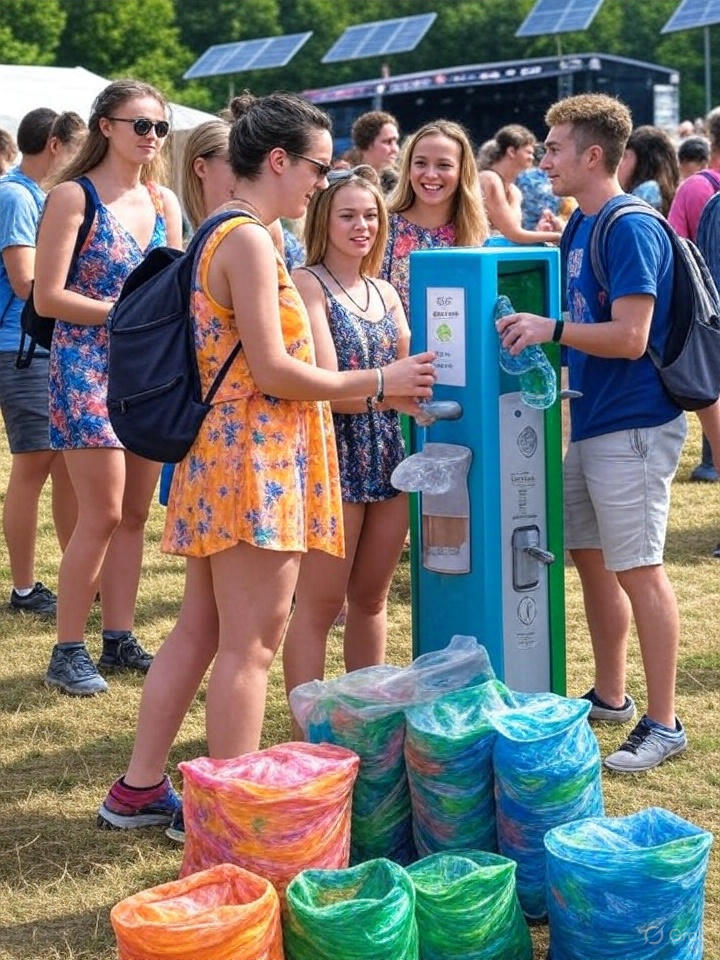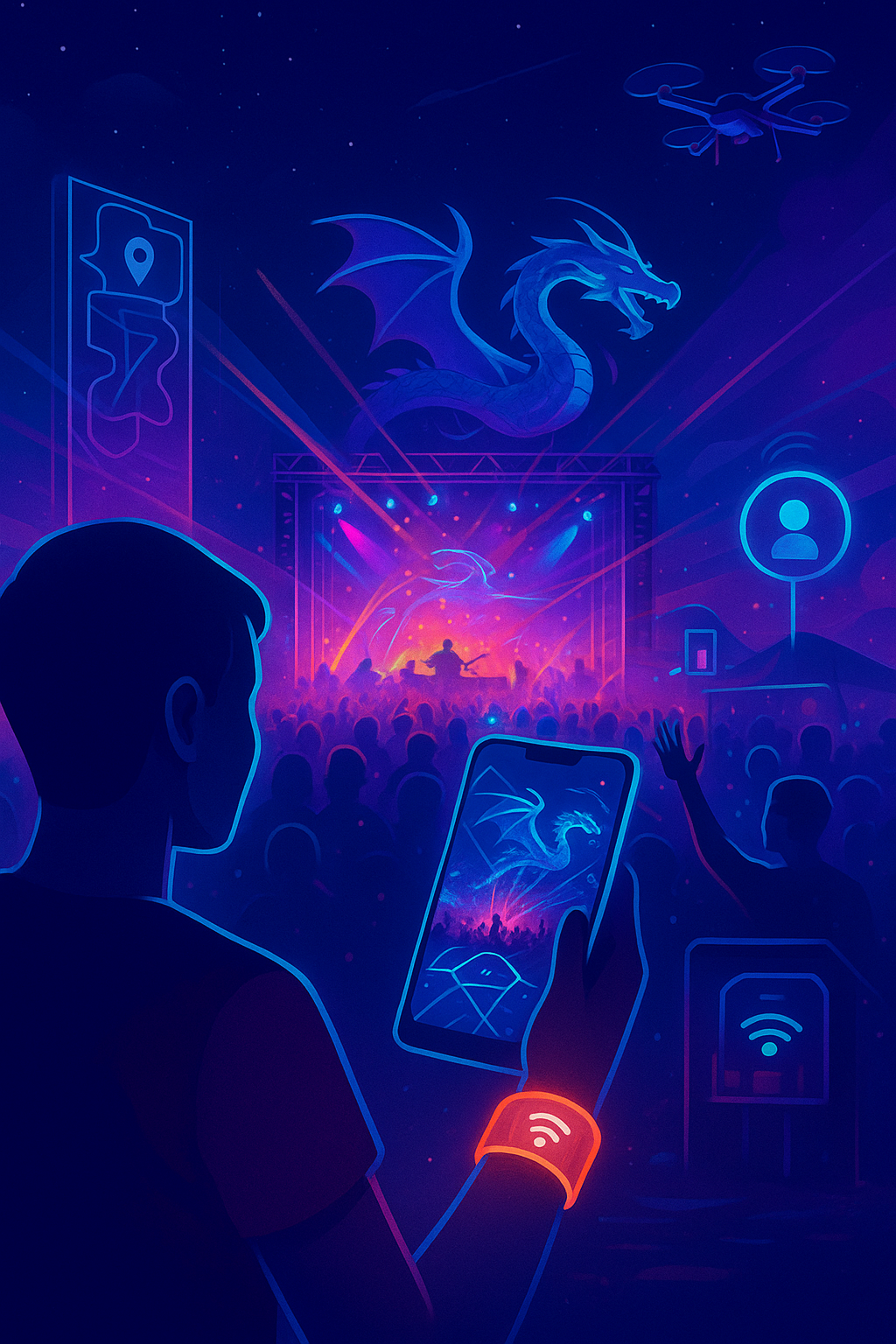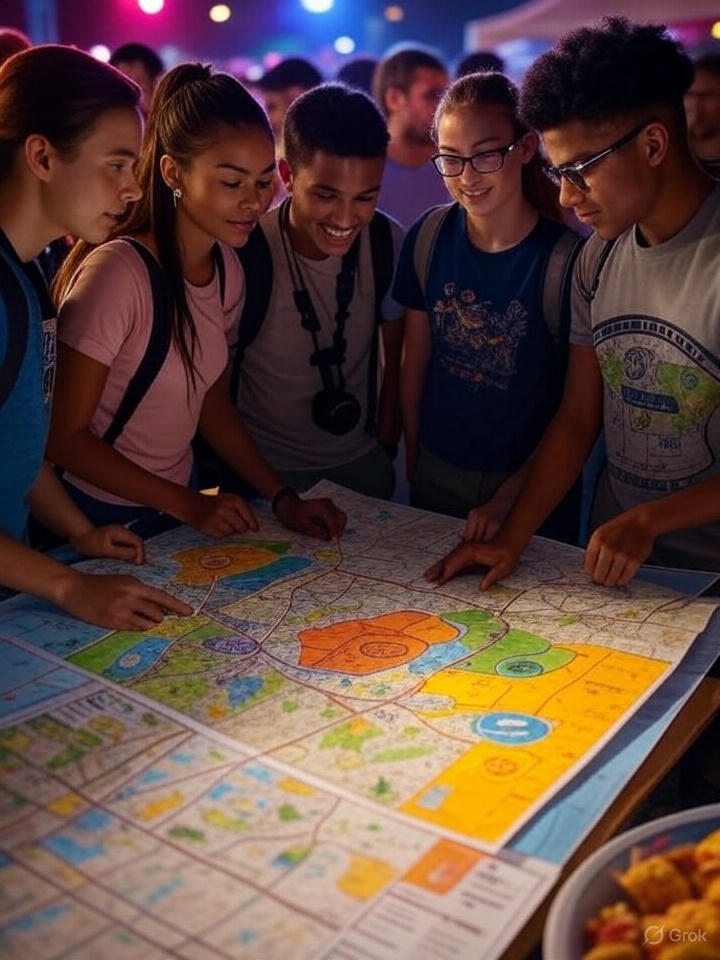When 200,000 festival-goers descended on Glastonbury in 2017, the festival sold over 1 million plastic bottles—prompting organizers to ban their sale in 2019. That year, they recycled 40 tonnes of plastic bottles, 45 tonnes of aluminum cans, and composted 132 tonnes of food waste. The environmental footprint of festivals has long been a paradox: celebrations of art and community that simultaneously impact the natural world they often celebrate. But research in environmental psychology reveals something fascinating: sustainable practices don't just reduce ecological impact—they fundamentally transform the quality of attendee experiences and create more memorable events. Let's explore the science behind sustainable festivals and how technology is accelerating this green revolution.
The Psychology of Sustainable Experiences
Recent research from the Journal of Environmental Psychology has uncovered what scientists call the "virtuous cycle of sustainability"—when festivals implement visible green practices, attendees report a 37% increase in overall satisfaction and a 42% stronger sense of connection to the event's community. This isn't merely correlation; neuroimaging studies show that when we participate in collective pro-environmental behaviors, our brains activate reward pathways similar to those triggered during deeply meaningful social connections.
"The sustainable festival isn't just about reducing harm," explains Dr. Emma Richardson, environmental psychologist at University College London. "It's about creating a coherent narrative where attendees become active participants in something larger than themselves—a community temporarily united in both celebration and responsibility."
Waste Reduction: From Burden to Breakthrough
The most innovative festivals are reimagining waste not as an inevitable byproduct but as a design failure. DGTL Amsterdam has pioneered what they call a "circular festival economy," achieving 98% waste diversion by treating the entire event as a closed-loop system. Their approach combines behavioral science with systems thinking—strategically placing recycling stations based on crowd flow analysis and using AI to optimize resource management.
What's particularly fascinating is how digital technology has become central to waste reduction efforts. Research from MIT's Senseable City Lab demonstrates that real-time waste monitoring systems can reduce festival landfill contributions by up to 62%. This is where FindTribe's interactive map features provide unexpected environmental benefits—by helping attendees navigate directly to water refill stations and proper waste disposal areas, the app reduces the "convenience gap" that behavioral economists identify as the primary barrier to sustainable actions at large events.
Energy Innovation: The Power Shift
The energy requirements of modern festivals are staggering—a medium-sized event can consume as much electricity as 1,200 homes. However, the landscape is changing rapidly. A comprehensive study in the International Journal of Event Management found that festivals using renewable energy sources saw a 31% reduction in carbon emissions while simultaneously reducing operational costs by 24% over a three-year period.
Beyond the environmental benefits, research from the University of Surrey's Centre for Environment and Sustainability reveals that visible renewable energy infrastructure (like solar panels powering stages) creates what researchers call "sustainability theater"—physical manifestations of environmental values that strengthen attendees' psychological commitment to the event's ethos and community.
Transportation: Rethinking the Journey
Transportation typically accounts for over 80% of a festival's carbon footprint, according to a landmark study in the Journal of Cleaner Production. The most successful sustainable transportation initiatives combine structural changes with behavioral nudges. Festivals offering dedicated shuttle services from transit hubs reduce individual car trips by 47%, while those implementing "transportation gamification"—rewarding sustainable travel choices with festival perks—see even greater adoption rates.
Digital platforms play a crucial role in this transformation. Research from Stanford's Persuasive Technology Lab shows that real-time information about transportation options increases sustainable travel choices by 58% compared to static information. While FindTribe doesn't currently offer carpooling features, our precise location services help shuttle systems operate more efficiently by providing accurate data on attendee distribution and movement patterns—information that traditional transportation planning methods struggle to capture.
Food Systems: The Overlooked Impact
Festival food vendors collectively serve millions of meals annually, with each food choice carrying significant environmental implications. A groundbreaking study in the journal Food Policy found that festivals offering primarily plant-based options reduced their food-related carbon footprint by 73% while increasing vendor profitability through reduced food storage complexity and waste.
What's particularly interesting is how sustainable food practices influence social dynamics. Research from Cornell University's Food and Brand Lab demonstrates that shared sustainable food experiences create stronger "taste communities"—groups bonded through collective culinary experiences that align with their values. These communities report 41% higher levels of social satisfaction compared to conventional festival dining experiences.
Water Conservation: Beyond the Basics
Water usage at festivals extends far beyond drinking water—from sanitation to dust control, the average festival attendee indirectly consumes 20 gallons daily. Leading events are implementing closed-loop water systems that treat and recycle greywater, reducing consumption by up to 60% according to research published in Water Resources Management.
The psychological benefits of visible water conservation are equally significant. Studies show that festivals highlighting their water stewardship create what environmental psychologists call "resource consciousness"—an increased awareness of natural resources that attendees carry beyond the event. At FindTribe, we've observed how our water station mapping features help attendees reduce single-use plastic while simultaneously creating natural gathering points that enhance social connections—a perfect example of how sustainability and experience enhancement can reinforce each other.
The Future: Data-Driven Sustainability
The most exciting frontier in festival sustainability is the application of data science to environmental management. Researchers at the University of Manchester have developed predictive models that can forecast resource needs with 94% accuracy based on real-time attendance patterns, weather conditions, and behavioral data—potentially reducing resource waste by 40% compared to traditional planning methods.
This is where digital platforms like FindTribe contribute to sustainability in ways that might not be immediately obvious. The anonymized movement data generated through location services provides festival organizers with unprecedented insights into how attendees interact with their environment—information that can optimize everything from waste bin placement to energy distribution. As Dr. Jonathan Peters from the Sustainable Events Alliance notes, "The sustainable festival of the future will be as much about bits as it is about watts—using digital intelligence to minimize physical impact."
The Sustainable Festival Experience
What makes the research on sustainable festivals so compelling is that environmental responsibility and attendee experience aren't competing priorities—they're complementary forces. When implemented thoughtfully, sustainable practices don't just reduce ecological impact; they create more meaningful, distinctive, and memorable events.
At FindTribe, we're fascinated by this intersection of sustainability, technology, and human experience. While our primary focus remains on helping people connect with friends and family at events, we're proud that our digital tools can contribute to the broader sustainability ecosystem of modern festivals. Our interactive maps highlight recycling station locations throughout event grounds, making it easier for attendees to locate proper waste disposal areas and encouraging responsible waste management.
By helping attendees navigate more efficiently to these sustainability resources, we're playing our small part in the green festival revolution. We're also eager to discover new ways our technology can support sustainable event practices in the future—because we believe that extraordinary events are those that respect both their attendees and the environment.




Leave a Comment
Share your thoughts, experiences, or questions about this article.
Thank you for your comment! It will appear after moderation.
Oops! Something went wrong. Please try again.